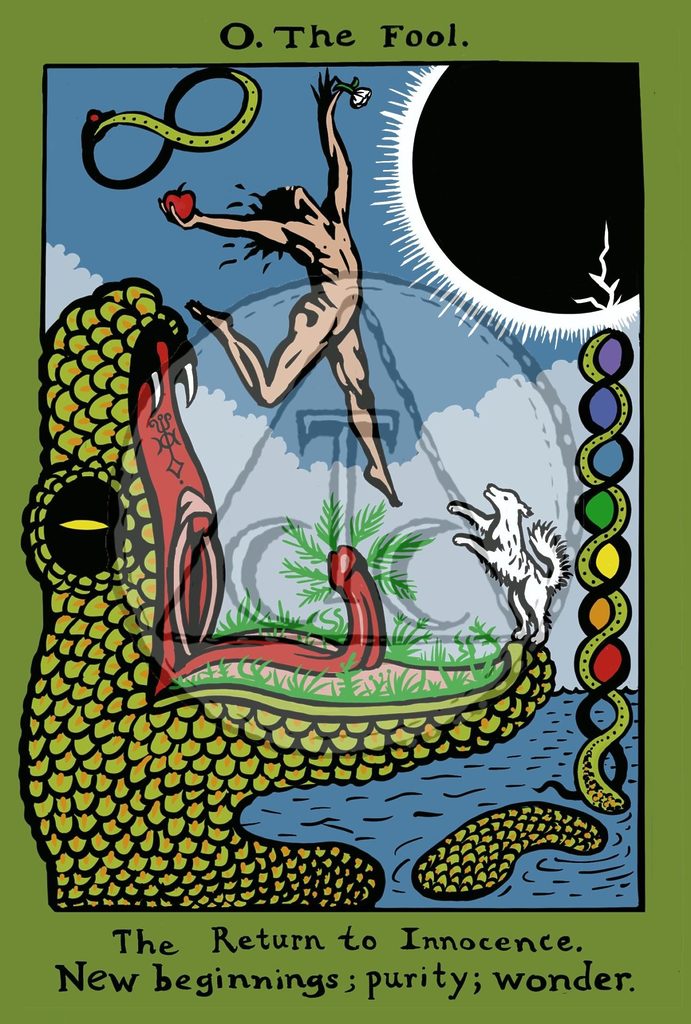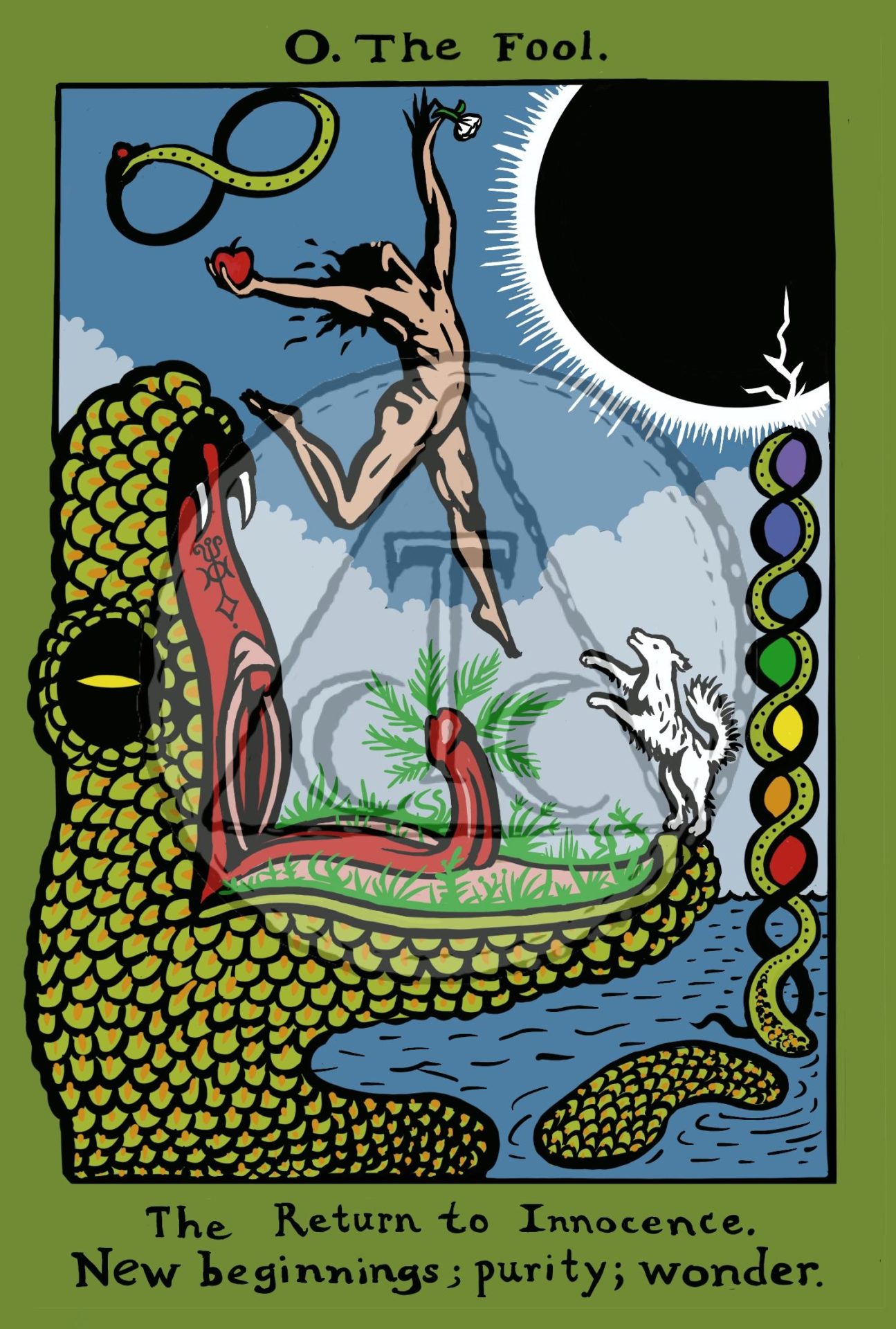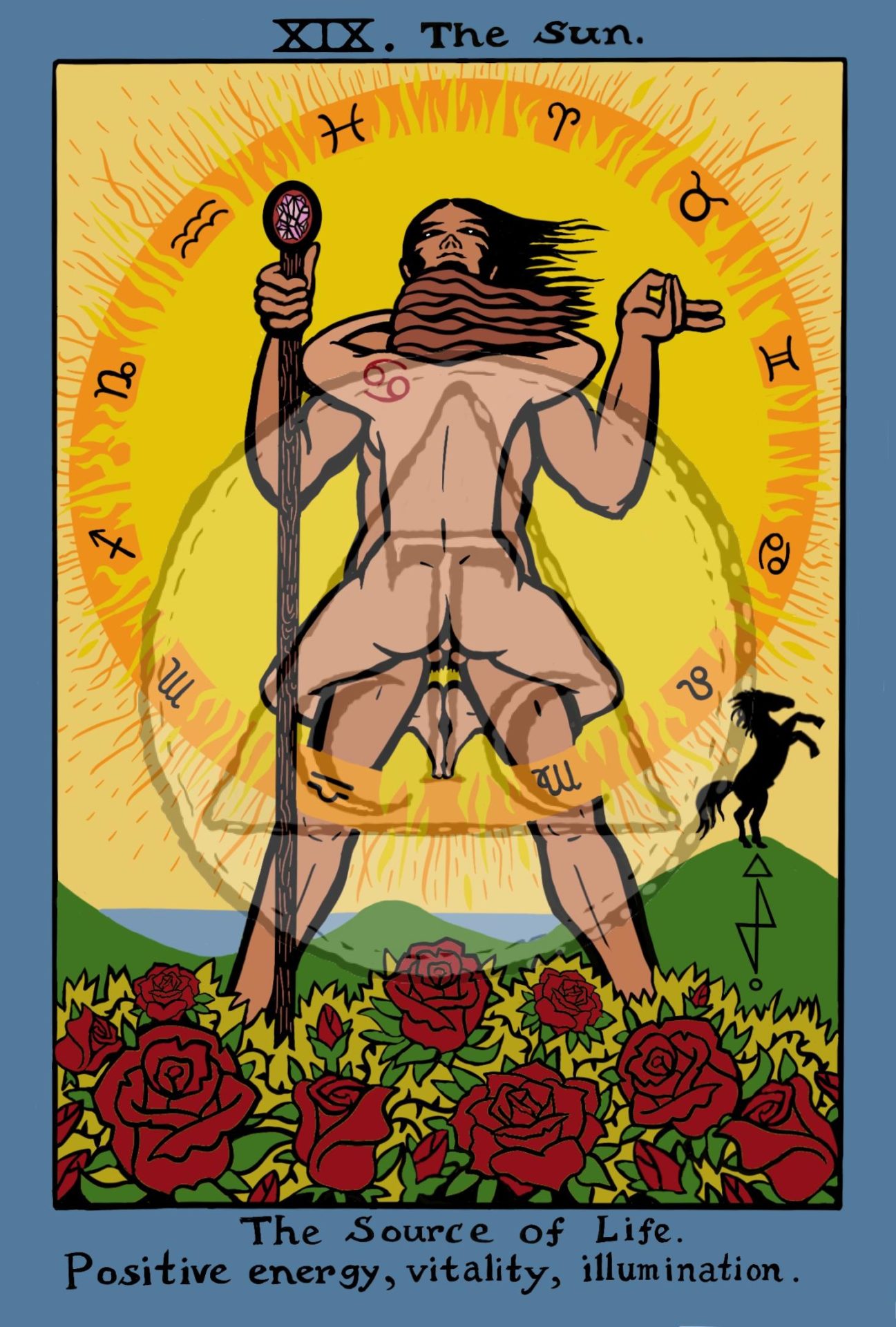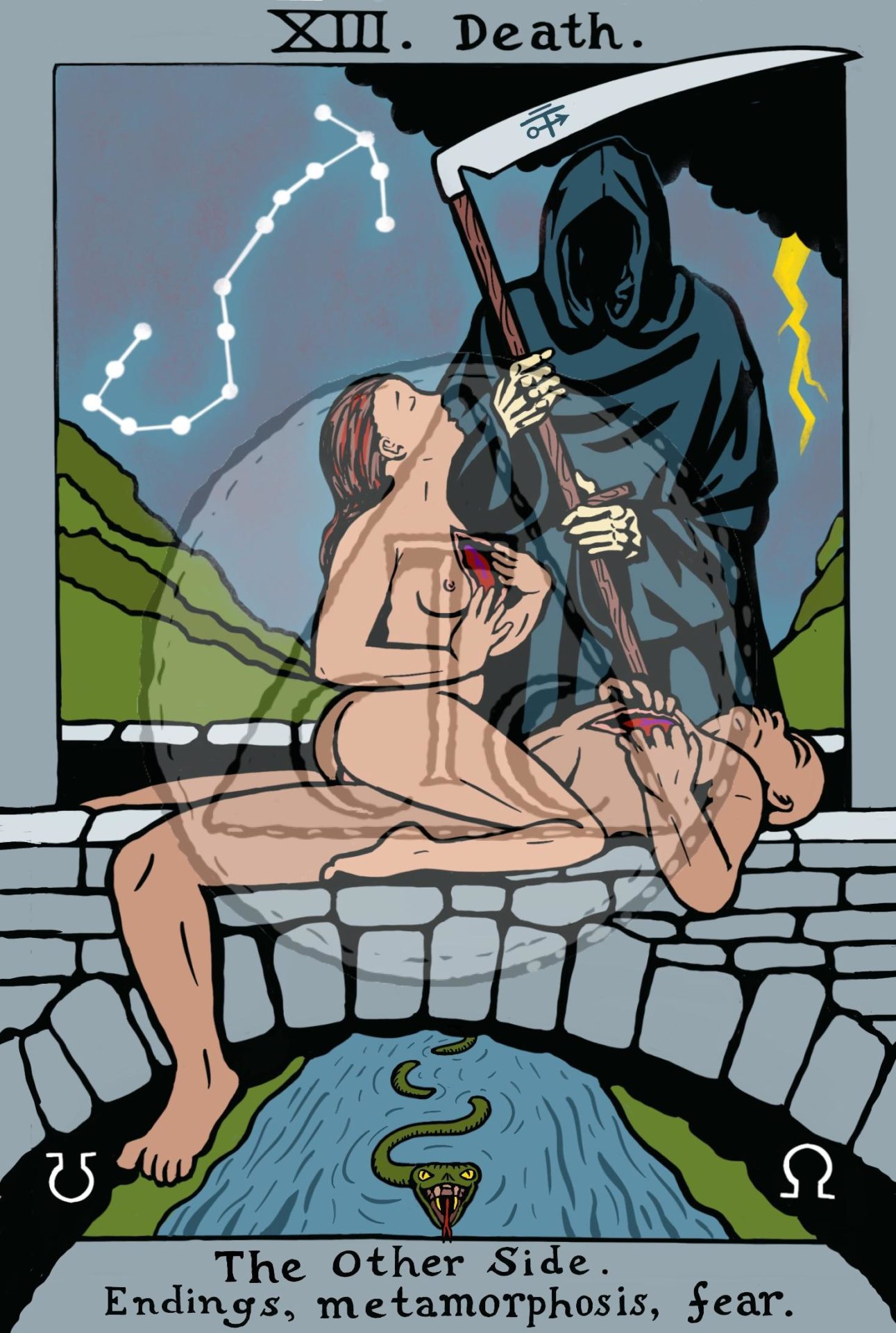The Levels of the Major Arcana: Power-over, Power-from-within, and Power-with

One way to understand the Fool’s Journey is to see it as a progression of three types of power: power-over, power-from-within, and power-with or among. These types of power correspond to three stages of development: mastery, integration, and transcendence.
Power-over is the ability to control one’s environment and impulses. It is the first type of power that the Fool learns, from the path from Magician to the Chariot. These cards represent the mastery of the physical, mental, emotional, and spiritual aspects of oneself. The Fool learns how to use their skills, resources, creativity, and willpower to achieve goals and overcome challenges.

Power-from-within is the ability to access one’s inner potential and wisdom. It is the second type of power that the Fool develops, from the path from Strength to Temperance. These cards represent the integration of the conscious and unconscious parts of oneself. The Fool learns how to balance our passions and instincts with reason and compassion. We also learn how to harmonize the opposites within and without, such as light and dark, masculine and feminine, order and chaos.
Power-with is the ability to connect with others and the divine. It is the third type of power that the Fool attains, from the path from the Devil to the World. These cards represent the transcendence of the ego and the illusion of separation. The Fool learns how to free ourselves from attachments and fears, and how to embrace our true nature and purpose. We also learns how to co-create with others and with the universe, in a spirit of love and joy.
The third level of the tarot, which starts with the Devil card and ends with the World card, symbolizes power-among, or the ability to transcend the limitations of the ego and connect with others and the world in a meaningful way. It is the expression of love and wisdom that emerges from the integration of the self and the collective. Power-among is not about domination or manipulation, but about cooperation and harmony.
The Third Level of the Tarot: Power-with or Power-among
Power-among requires us to acknowledge and respect the autonomy and diversity of others, as well as the complexity and beauty of the world. It also requires us to be realistic and pragmatic, to adapt to changing circumstances and to work with what is possible. Power-among is not a utopian ideal, but a practical necessity.

Power-among is the culmination of the tarot journey, as represented by The World card. It shows us that we are not separate from the world, but part of it. It shows us that we can achieve fulfillment and happiness by sharing our gifts and talents with others, by learning from them, by collaborating with them, by celebrating with them. Power-among is the ultimate expression of power-as-transcendence.
Power-among is a form of power that emerges from collaboration and solidarity among different groups and individuals. It is based on mutual respect, shared values and common goals. Power-among contrasts with power-over, which is the ability to control, coerce or dominate others through force, fear or manipulation. Power-over often creates inequality, injustice and oppression in society and in personal relationships.
Power-with (power-among) vs power-from-within
Some might think that power-among is a contradiction to power-from-within, which is the theme of the second level of the tarot, from Strength to Temperance. They might argue that power-from-within is the ultimate goal of spiritual development, and that power-among is a distraction or a compromise. However, this view misses the point of the tarot as a this-worldly oracle, not an other-worldly one.
The tarot teaches us that power-from-within is a necessary step, but not an end in itself. Power-from-within helps us to discover our true nature, our gifts and talents, our passions and values. But it also challenges us to use these resources for a higher purpose, to contribute to the well-being of others and the planet. Power-from-within is not enough if it does not lead to power-among.
The Second Level of the Tarot: Power-from-within

Power-from-within is the inner sense of self-worth and confidence that enables people to act creatively and effectively in their lives. It is the recognition of one’s own potential and uniqueness, as well as the appreciation of diversity and difference in others. Power-from-within can help us overcome internalized oppression and negative beliefs that limit our choices and actions.
Power-from-within is also related to the notion of transcendence, which is the ability to go beyond the ordinary and mundane aspects of reality and connect with a higher purpose or meaning. Transcendence can be accessed from within or from without, depending on one’s worldview and spiritual orientation. Some people may find transcendence through meditation, prayer, art, nature or other forms of expression. Others may find transcendence through engagement with the world, social justice, activism or service.
The challenge of power-from-within is to balance the inner and outer dimensions of life, and to integrate one’s personal growth with one’s social responsibility. The goal of power-from-within is to find fulfillment in one’s actions, not just in one’s thoughts or feelings. Power-from-within can inspire people to use their power-to and power-with for positive change in themselves and in the world.
The pitfalls of escapism and elitism: false power-from-within
However, transcendence should not be confused with escapism or elitism, which are forms of power-over that deny or devalue the world and its problems. Escapism is the tendency to avoid facing reality and its challenges by retreating into fantasy or illusion. Elitism is the belief that only a select few have access to special knowledge or salvation, and that the rest of humanity is doomed or unworthy. Both escapism and elitism can lead to detachment, indifference or hostility towards others who do not share our perspective.
The Ideal of Power-among (Power-with)

Power-among is a form of empowerment that seeks to create the optimal environment for liberation and self-realization. It acknowledges that everyone has a spark of true freedom within themselves, which can be nurtured and developed, leading to greater trust, autonomy of choice and learning from mistakes, so that the common good can be enhanced.
Power-among also recognizes that true transcendent power; true spiritual power is not exclusive to those who attain individual enlightenment but belongs to the whole of reality.
I think that this level of power is like the Bodhisattva ideal, where the radical oneness of reality does not allow anyone to be left behind in the quest for liberation.
This power-among enables us to understand that individuality is a temporary state that only refines our intentions but not our actual outcomes.
The main idea I want to convey in this text is that the inner-directed approach to self-development is not enough, and that we need to engage with the world and other people in a respectful and meaningful way. I will use Martin Buber’s concept of I-Thou and I-It relationships to illustrate my point.
One of the reasons why I have shifted my focus from emphasizing the supreme value of the inner-directed, is that I have realized the importance of the world for refining the soul through action among others. This means that I must accept the other, other persons, as full selves who are self-refined from within and not merely as assumed replicas of my own individual self (a dominating view of other’s self as without will). In other words, I have to acknowledge not only my own autonomy from the second-level, but also at the third-level that all human beings, all life beyond the mere human have a unique autonomy which is at its core mysterious and transcendent and which gives the world its authority and power to draw from us true transcendental goals of love, compassion, sacrifice, and purpose. It also means that in this age of scientific individual achievement we must care for the welfare of the whole world in order to truly realize ourselves. Martin Buber’s I-Thou-It distinction, from his challenging book on religious ethics, I AND THOU, offers insights into these three power relationships. The power over relationship is the I-It distinction. The power from within relationship is the location of I. The Thou is the other not only as the divine, but as all others in the world who are by default because they are not I nor it, must be other and therefore the locus of the divine.






